

|
Archives
synchronicity, synergy, and subminature Sales for gordy's camera straps keep going up. It keeps me too busy some times. I'm also working on a new line of hand straps starting with a hand strap for 4x5 Speed Graphics. It's going to mean a new way of attaching straps for me: snaps. I need to go into Seattle next week and talk to my leather supplier to see if he has the low profile snaps I need. Using snaps will let me do a hand strap for DSLRs and old folders too. I'm excited about the possibilites! Unfortunately all that has left little time to take pictures. But that may change. Most of my photography has been with big negatives, mostly 120 and 4x5 with some 35mm. In the 1950s 35mm cameras were considered minature cameras since 120 and 620 medium format was king and 4x5 press cameras were still the norm. So it came that anything smaller than 35mm was called subminiature. The only subminiature camera that I've used was a Minolta 110 in the 1970s. I liked the size and ease of use but, with the films available, I wasn't pleased with the results and put it away. A year ago I bought another subminiature camera, an Olympus Pen EE S.
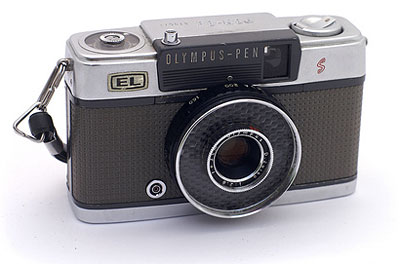 It's a great coat pocket camera. The format is half-frame 35mm. A 35mm negative is 24x36mm and half-frame is 18x24mm. It was followed by an Olympus Pen EE-2 S and a Pen D. Being too busy has meant that I've not used them as much as I would like. Another reason is that, while the are great for a coat pocket, I really would like a shirt-pocket camera. A camera that I can have with me on my person at all times. A couple of weeks ago I discovered the Minolta 16 II and Minolta16 Mania.
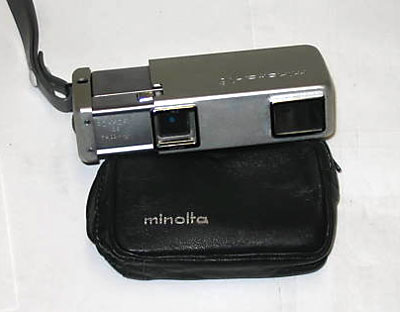 I picked one up for $10. Smaller than a pack of cigarettes. The Minolta 16 II was designed to use double perf 16mm film giving a 10x14mm negative. Later models used single perf film giving a 12x17mm negative. The 16 II is all mechanical with f stops ranging from 2.8 to 16 and speeds from 1/30 to 1/500 and one of the sharpest lenses in the subminiature category. It cocks the shutter by pullin gone end of the camera out like on a Minox. It's been called the poor man's Minox. In searching for more information I came across www.submin.com which has a lot of information on other submin cameras. I checked out the 110 section looking for information on my 1970s Minolta 110 but found that Canon made a high end rangefinder 110 called the Canon 110ED-20. The 110 format is also based on 16mm film but has it's own small perforations giving a larger 13x17mm negative. While I was not happy with the results in the 1970s, film had improved greatly since then and I wanted to give it another try. My friend Vern has a storage unit full of a camera collection from a late friend that he is selling off. I called to see if he knew if he had a Canon 110ED-20. He didn't think so but he did have some Pentax auto 110s and a couple of Minox cameras. I went down to the storage facility with him and there was no Canon there. I did find one on eBay and picked it up for 91 cents.
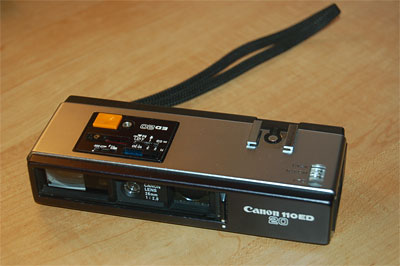 Did I say that submin cameras go for cheap. One reason is that, while once very popular, submin isn't so much now and film is not readily available but can be had through the miracle of the internet. Vern had mentioned the Pentax 110, a very interesting little camera.
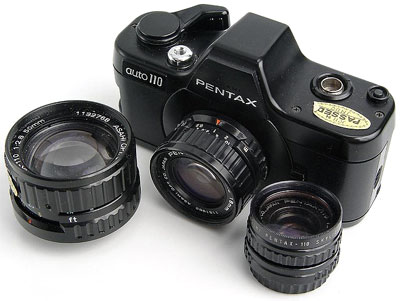
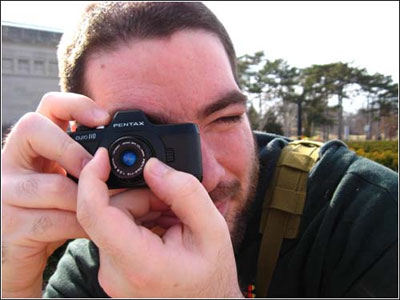 from edwardowe's photostream Pentax System 10:Largest Subminiature System?? THE MOST VERSATILE LITTLE CAMERA EVER MADE They typically come with 3 interchangeable lenses with an 35mm equivalent of 36mm, 50mm, and 100mm and can be had for as little as $35 with three lenses. Vern had 3 sets with some extra accessories. While they look like a toy, they aren't. It's a real SLR with a little mirror that flops up and down when the picture is taken and TTL metering. Very clever. I'm trading for one of them. The last addition to my submin collection was a little harder to decide on because the negative size was *really* small: 8x11mm which is smaller that your pinky finger fingernail but in the end I couldn't resist.
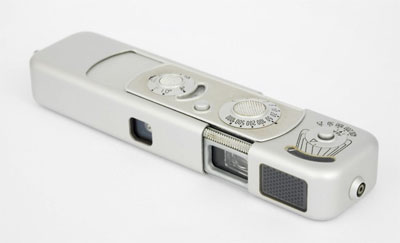
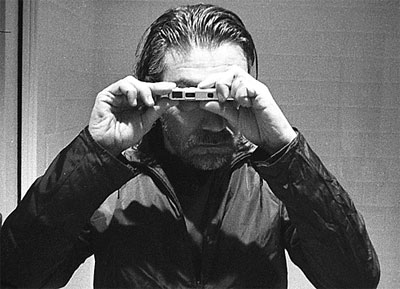 from exaktitud's photostream It's a Minox B from 1963, the essential spy camera. I could go on and on about this little jewel but that will have to wait for another post. It is truly a shirt pocket camera that I can have with me at all times. So precise. So mechanical. So cute. And they can be had for as little as $40. The downside to these little cameras are the little negatives. The results with modern film make them better then ever but there are limits to how much you can blow these negatives up. While some like to blow the little 8x11 Minox negatives up to 8x10, they are more comfortable enlarged to around 3 1/2"x5" for best results. Hanging a framed 3 1/2"x5" on the wall doesn't sound so impressive when the vogue today is 16"x20" and larger but I've not been one to follow the herd. (Of course that may be because I'm lost.) This is where the synchronicity and synergy come in. Breaking news: I just checked the mail and my 100 ISO black and white Minox film arrived from Blue Moon Camera and Machine. My Minox B is now loaded. Whoohoo! I thought I had posted about this but I can't find it. For some time I've wanted to to books. There is a thriving business in on demand printing of books. You make your files and send them off and then you can order your books one at a time. Unfortunately it's expensive and there isn't a whole lot of control over color balance. I've wanted to make my own books. I have the printer but the binding of the books was a problem. A couple of posts by John Sypal help break that logjam. Pictures in Print: Orinokimi collections
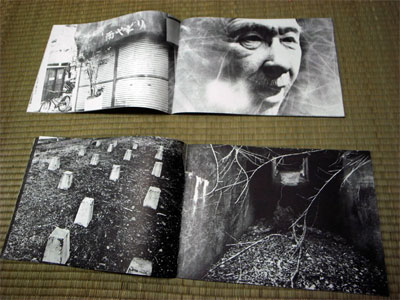 Pictures in Print: Hiroyuki Kishiyama
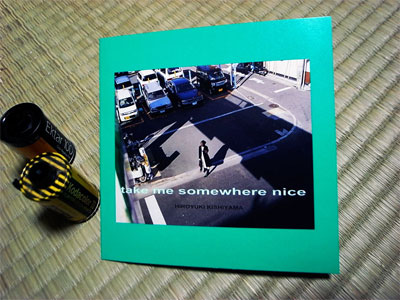 John is in Japan and the Japanese photo scene is much more involved in books. These books were done at a printer but they could be done at home too. The black and white one is saddle stitched with staples. It turns out that this is easy to do with something like a Bostitch saddle stitch stapler for under $40 plus a rotary trimmer, which I now have. Figuring out the book binding problem and finding submin cameras at the same time was excellent timing. One of my favorite books is André Kertész: The Polaroids, a collection of SX-70 Polaroids the Kertész did at the end of his life. Wonderful images and they are small being the size of a SX-70 Polaroid, which is about 3 1/2" square. I think the small booklet format will be a great way to present the submin pictures. There is something about small prints that draw you in that I find interesting. I can see that composing for small prints is a different thing than for large prints. I also have always been attracted to photographs in series which also makes the book format the way to go. Now to take some pictures and play around with making books.
|
|